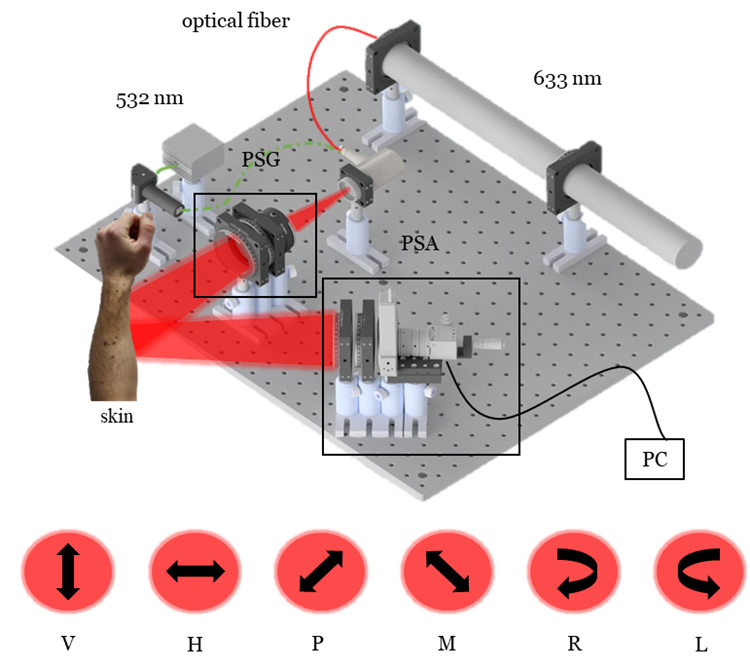Optical technologies are a promising tool for the early detection of melanoma, which is a type of skin cancer that can be aggressive and deadly if not detected and treated in its early stages.
The following technologies utilize the properties of light to obtain detailed information about the structure and function of the skin, which can be used to identify early signs of melanoma and other skin conditions.
One of the novel optical technologies for melanoma detection is polarimetry, which is a technique that uses the polarization of light to obtain information about the properties of materials and surfaces. By measuring the polarization of light reflected or transmitted through the skin, polarimetry can reveal hidden features and abnormalities that may not be visible with other imaging techniques.


Figure 1. Rendering of Mueller Matrix polarimeter. PSG: polarization state generator. PSA: polarization state analyzer.
Another emerging optical technology for melanoma detection is hyperspectral imaging, which is a technique that uses a wide range of wavelengths of light to produce detailed images of the skin and identify abnormalities that may not be visible with traditional imaging techniques. Hyperspectral imaging has the potential to detect melanoma at an early stage, when it is most treatable, by identifying changes in the chemical composition of the skin that may be indicative of malignant cells.

Figure 2. Hyperspectral imaging camera (HAIP solutions).
Raman spectroscopy is another optical technology that is being developed for the early detection of melanoma. This technique uses lasers to excite molecules in the skin and measure the scattered light that is emitted, which can provide detailed information about the chemical composition of the skin. By analyzing the Raman spectrum of the skin, it is possible to identify changes in the so-called molecular fingerprint of the studied sample.
Figure 3. Confocal Raman microscope.
